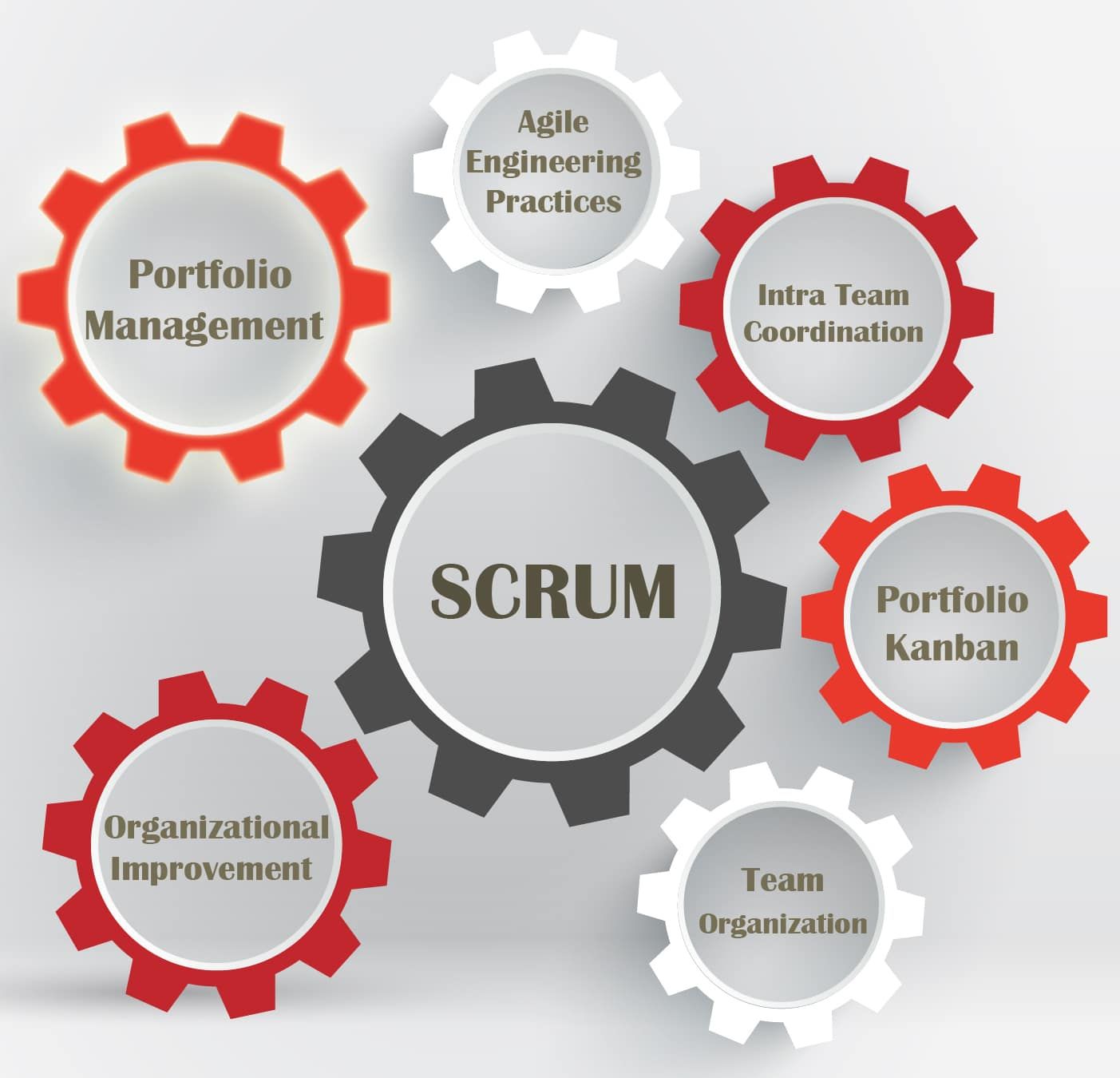Portfolio Management

(Presented as Part 2 in the Scrum Alone is Not Enough series.)
As mentioned in the introduction to the Scrum Alone is Not Enough series, Scrum is simply the framework and, to work best, other tools and patterns need to be incorporated to build the most effective systems.
In many organizations, we see common challenges:
- People being members of multiple teams
- People/Teams working on multiple unrelated items at the same time
- A focus on Projects and a traditional project staffing model, instead of stable teams
- Stakeholders making demands that don’t fit the product vision or strategy
- Stakeholders asking for new features without consideration for what is already planned I frequently tell people that Portfolio Management can help solve these problems, but what does that really mean? Let me help break it down.
Principles of Portfolio Management
Portfolio Management in Scrum (or Kanban) aims to ensure that the team(s) are always working on the highest priority work without pressure that dilutes their focus from a manageable goal. This is particularly critical if they are being asked to work in multiple teams or on unrelated projects. Without Stable, Focused Teams, there is no predictability in the system.
Agile Portfolio Management is the art of deciding which big picture items the business wants its Scrum Teams to invest in over the next few months, so a Product Owner can understand the priorities and the Team can work on them in appropriate order.
When your organization has only two or three Scrum Teams, it is entirely possible for Portfolio Management to be conducted by the Team Product Owners. They get together to discuss the big picture and where they want to steer their products over the next few months.
But when the number of teams becomes too large for informal coordination to be sufficient, or when Product Owners frequently find themselves outgunned by stakeholders with more clout, we need Portfolio Management to help keep the focus in the right place.
Agile portfolio management mitigates challenges by:
- Bringing work to teams, not people to projects (forgoing traditional approaches that define projects and then staff teams for them)
- Establishing boundaries between stakeholders and teams
- Emphasizing visualization and collaboration
- Encouraging self-organization by prioritizing and providing constraints, then letting the doers make decisions (remove micromanagement)
- Encouraging timely decisions, especially when decisions are reversible
- Focusing on Value over Cost
- Creating Options, not Contracts – Traditional Portfolio Management emphasizes Predictability and Forecasts, but our world now has shorter time horizons and increased Complexity, so focus instead on creating options.
- Allowing for agility and slack (spare capacity) – If a team or person isn’t busy with the highest priority work, they can go and help someone else (getting the existing items to “Done” faster) rather than start something new.
SAFe is famous for introducing portfolio management. It’s infamous for creating masses of additional overhead in the name of Alignment. It doesn’t need to be that hard.
How to Make It Happen
If you are – or have – one or two product owners helping ~4-6 teams, this might be very simple. POs should meet with the stakeholders every 6-8 weeks for a portfolio management meeting. Prior to this, the Product Owner should observe how many large items the teams typically complete in this period so they know the team’s total capacity. That number will allow the PO to decide how many new items to pick up in the next cycle. Here’s how it all looks:
Prior to meeting with the stakeholders, the PO and team members discuss the current state of the product so that the PO has a clear understanding of what is truly done.
-
Review what has been completed/delivered recently.
-
Review what is being worked on currently.
-
Take total capacity less the number of large items already in progress to anticipate the number of new items to consider.
-
The PO and stakeholders consider which features have enough value delivered to wind down investment.
-
Product Owners and stakeholders work together to decide which items to prioritize next, keeping that capacity number in mind.
-
Offer options. Instead of promising that a feature will be delivered in a specific month or quarter, try the following framing: “In the next month/quarter, we can deliver one major feature; our choices are …” Now the conversation is focused on the trade-offs.
-
Make/encourage decisions. Every time a stakeholder asks for more information rather than decide, they’re increasing waste and still spending money. The time and effort taken to gather the information is waste. In the absence of a decision, the team will still build something. Too bad if it wasn’t the highest value.A Story Map often helps the Product Owner and stakeholders have better discussions, visualizing the choices about how features fit in the bigger picture.
The final decisions about what goes into the Product is still the Product Owner’s, but using portfolio management will help the PO understand the stakeholders’ strategic needs at the same time as stakeholders understanding that a team’s capacity isn’t infinite. This keeps engagement focused at the right level.
Outside of the portfolio management meeting, if the stakeholder wants to make a request that has a large impact, ask them to bring it up the next time you meet. The goal is to ensure that large chunks of work are always considered in terms of the product strategy, and that trade-offs are made with other work items.
In larger organizations with more teams contributing to a bigger product suite, we will need more coordinated approaches, but the principles are the same.
Remember, Portfolio Management creates overhead, takes some control away from Product Owners, and reduces your ability to adapt in the moment. So be Agile and take the lightest approach you can right now, and always ask if things can be simplified later.
Updated on December 18, 2024
Images by Agile Pain Relief Consulting. Elements of first image designed by Freepik.

Mark Levison
Mark Levison has been helping Scrum teams and organizations with Agile, Scrum and Kanban style approaches since 2001. From certified scrum master training to custom Agile courses, he has helped well over 8,000 individuals, earning him respect and top rated reviews as one of the pioneers within the industry, as well as a raft of certifications from the ScrumAlliance. Mark has been a speaker at various Agile Conferences for more than 20 years, and is a published Scrum author with eBooks as well as articles on InfoQ.com, ScrumAlliance.org and AgileAlliance.org.
